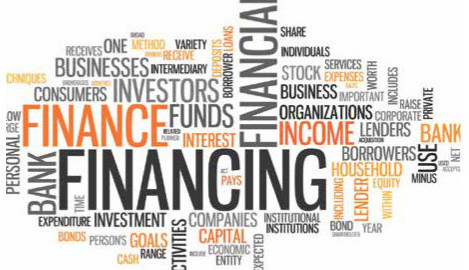UNDERSTANDING Lines of Credit
By Dr. Teresa R. Martin, Esq
There are many different ways to borrow money. You can go to a bank for various types of loans. You may choose to use pawnshops or payday loans. Credit cards are another idea. You can even borrow money from friends or family.
Another option is a line of credit. While lines of credit have been popular with businesses, they haven’t been widely used by individuals. This is primarily because banks aren’t advertising them, and most borrowers lack the knowledge to inquire.
This is unfortunate, because a line of credit has many unique features that set it apart from other types of loans. A line of credit is similar to a credit card, but with better interest rates.
Figure out if a line of credit might be the perfect source of funds for you:
- A line of credit is a flexible loan from a financial institution. A line of credit has a limit, just like a credit card. You can use the available balance as needed.
- Interest is charged as soon as the money is borrowed. The borrower can repay immediately or according to a predetermined schedule.
- These loans tend to have a lower risk for banks, so they like to provide lines of credit. The default rate is much higher for credit cards. But, it’s important to qualify because it’s an unsecured loan.
- There are many times that a line of credit can be useful. Banks prefer to refrain from making onetime personal loans, especially those that are unsecured. It’s pointless for a borrower to take out several short-term loans over the course of a year. A line of credit bypasses these issues by making the money available as needed.
- Lines of credit aren’t normally used to make large purchases. They’re mostly used to even out the variability of monthly income and expenses.
- While a credit card can perform the same function, a line of credit is usually less expensive to use. The interest rates are significantly lower and the payment terms are more attractive.
- Events or items that require a large cash outlay, like a wedding, are one use for this funding source. Sometimes credit cards aren’t accepted by certain vendors.
- A line of credit can be part of a bank’s overdraft products. It can be used to fund quarterly tax payments, and it can be a great source for emergency funds!
- A credit line can also be used to fund other projects with uncertain costs.
- Lines of credit aren’t perfect. Like all loans, a line of credit has some potential downsides.
- Lines of credit have higher interest rates than traditional secured loans like mortgages and car loans. Check with your bank to see just how much you can save.
- You’ll require excellent credit to be approved for a line of credit. This type of borrowing has higher qualification standards than a credit card or mortgage.
- Many banks will charge a maintenance fee, even if you’re not using the line of credit. These fees are charged either monthly or annually. In most cases, the interest isn’t tax deductible.
A line of credit is a lending source you can use, if it fits your needs. Borrowing too much or making unwise choices can create the same financial challenges as any other type of loan.
Like any loan, it’s important to be aware of all of the details. Ensure you understand the repayment schedule, interest, and fees. And remember to shop around for the best deal!
Dr. Teresa R. Martin, Esq. is the founder of Real Estate Investors Association of NYC (REIA NYC). REIA NYC (www.reianyc.org ) is a premier real estate investment association serving the New York City marketplace. Its primary focus and mission is “helping our members build, preserve, and harvest multi-generational wealth” in the areas of real estate investments, business ownership and personal development.












